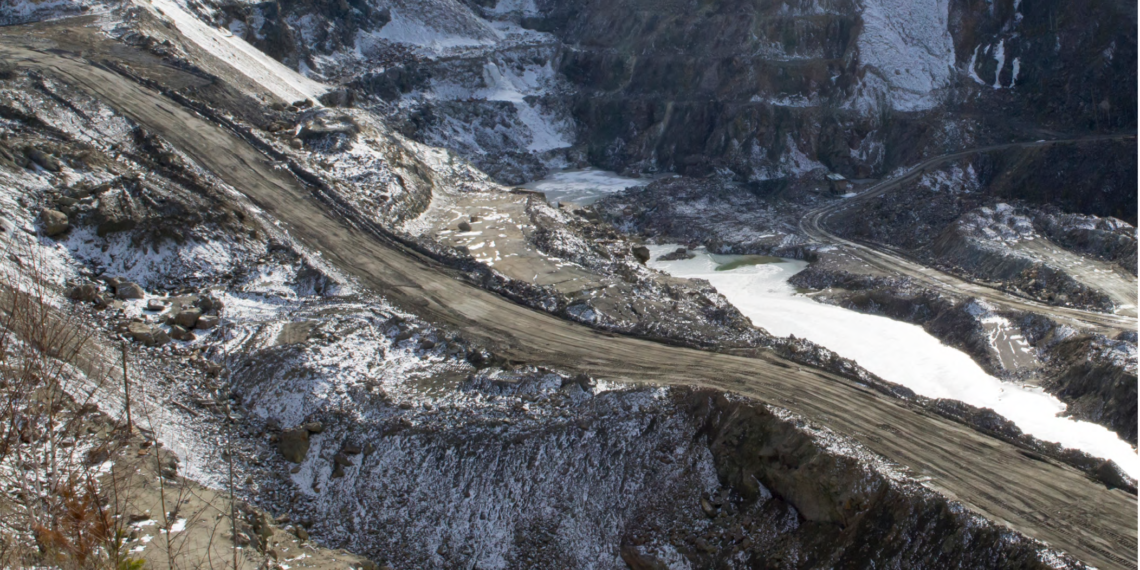Can you give us a breakdown of what graphite is and the differences between natural and synthetic graphite? Are their end-uses different?
Graphite is an allotrope of carbon and has inter-layered spacing, it’s very crystalline in its structure. Those layered spacings allow us to use it for an anode in a battery, because we’re able to inter-collate lithium into those layers. That’s really the criticality here. Graphite has a range of different properties. Other allotropes, such as diamonds, amorphous carbon, or hard carbons, are not able to do that. So, the right type of carbon or graphite is required for batteries.
In terms of the sources of graphite, obviously we have natural graphite, but synthetic graphite is the dominant supply for battery technologies. That starts out as petroleum pitch coke, which is then heated at over 2500°C for a week to turn it into a graphitized compound.
Natural graphite is a mineral resource which is mined, and has an ore body with impurities which must be removed. So, there are different processing stages that need to be done to liberate that graphite to be used in batteries.
There are a range of different applications, batteries being one. Electrodes for aluminum, electro wiring, lubrication products, and other things also require graphite.
What is graphite’s role within the battery value chain and what is the process to make it battery-ready?
Graphite is the anode material used in all lithium-ion batteries. It has the highest specific energy of all materials, which makes it particularly attractive. It is also used as a flake material. We then spheronize it to reduce its surface area and improve its packing density. That’s really important for the volumetric or gravimetric energy density in a battery.
Once we’ve spheronized the material, we can do the final purification. Lithium will react with any impurities in the battery, so the purer the material, the better the performance of the device. Purification is a very important step. Lastly, we coat those particles with an additional carbon material to reduce its surface area. It’s then used by the battery manufacturer to turn it into an anode material that’s used in today’s batteries.
Can you give us a bit of insight into the processes involved in mining and processing graphite?
Natural graphite specifically comes from a range of different geological sources. It’s important when a miner finds a graphite resource that they understand the geology. That might include the flake size or the impurity matrix. If there is an aluminum iron silicate, or any other particularly intractable materials found, the purification will be designed to deal with those impurities.
However, the crushing, flotation, and screening needs to be optimized to generate a high purity product that can handle further processing. Parts of that include looking at the ESG requirements, using sustainable chemicals, and processes to achieve strong ESG, which is something that the consumer today is really looking for.
As countries seek to localize production, they will look for their own resources to manufacture their own battery technology
Where are you seeing emerging opportunities? Syrah is often touted as having big potential in Australia. Why is this, and are there other similar types of projects around?
We’ve seen lots of demand for graphite, and this is simply because of the burgeoning demand for batteries as a whole. There’s been a tailing off in production of artificial graphite in China. Even they see some of the challenges around production using pitch petroleum, pitch coke, and the energy considerations and pollution aspects of that. This is now opening other opportunities for mined graphite, from places such as Mozambique and Tanzania, where Australian miners are active, but also in Australia. There are mineral deposits in Queensland, South Australia, and Western Australia, which are now being actively explored to establish their potential for use in battery activities.
There are other countries that have graphite deposits, which I think you’ll see even greater activity in, because as countries seek to localize production, they will look for their own resources to manufacture their own battery technology.
Are there any potential threats that you’re seeing in the industry or specifically with graphite’s role within the battery value chain?
We’re seeing the emergence of new battery technologies because people are looking for other solutions. Lithium has its challenges around critical mineral accessibility and availability. New chemistries, such as redox flow, sodium iron, and others, are now emerging. There are some challenges in that those batteries use different materials. In sodium’s case, the anode is hard carbon and not graphitic carbon. It’s a higher surface area, porous material, so it doesn’t use a mineral based product. That chemistry, though, has a lower energy density than lithium. It will suit a much different market. It may take some market share, but I don’t think it’s going to impact the broader spectrum of opportunity for graphite. There are other chemistries emerging as well, but I think there’s plenty of growth yet to happen in the graphite market.
Tell us more about CSIRO and what you are doing within this space?
CSIRO is Australia’s National Research Agency. We’re very involved in the development of different battery chemistries, but also in mineral processing. We are interested in how we can sustainably produce critical minerals that can go, not only into energy storage devices, but also into other renewable energy generation technologies, such as solar or wind.
Where we have to recover critical minerals and process them, we’re very interested in developing technologies for that. We have a mission in development called the Renewable Energy Powerhouse (that you can find on our website), which talks about how we want to turn Australia into a renewable energy superpower, through mineral processing and activities around that to develop technologies that can support the renewable energy
transformation.












